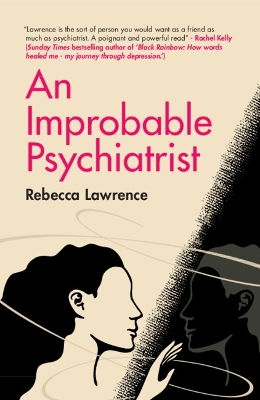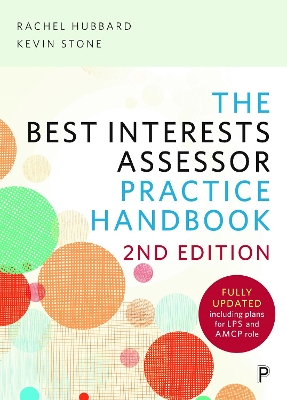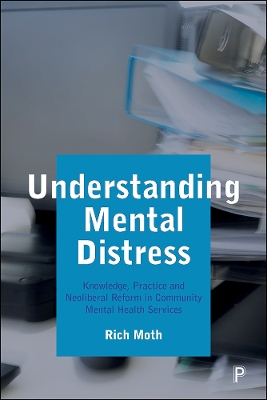Targeting the Positive with Behaviours that Challenge
 portes grátis
portes grátis
Targeting the Positive with Behaviours that Challenge
Empathic Strategies for Working with Children and Adults
Baker, Andy
Jessica Kingsley Publishers
11/2024
432
Mole
9781839979002
Pré-lançamento - envio 15 a 20 dias após a sua edição
Descrição não disponível.
Preface.
Introduction
Chapter 1 - What is "Behaviour that Challenges"?.
Chapter 2 - Prevention Strategies.
Chapter 3 - Building a Positive Environment
Chapter 4 - Person-centred Approach.
Chapter 5 - Environmental Culture.
Chapter 6 - Behaviour Management Old Logic: Punish/Reward.
Chapter 7 - Introduction to the 6 Stage Target Model
Chapter 8 - Identify Maladaptive Behaviours.
Chapter 9 - Identify Positive Behaviours.
Chapter 10 - Causes of Behaviours that Challenge - Reflex.
Chapter 11 - Causes of Behaviours that Challenge - The Human Nervous System..
Chapter 12 - Stage 2: Understand/Empathise: Causes of Behaviours that Challenge - Trauma.
Chapter 13 - Causes of Behaviours that Challenge - Factors that Affect Brain Functioning.
Chapter 14 - Causes of Behaviours that Challenge - Reactive.
Chapter 15 - Causes of Behaviours that Challenge - Intentional
Chapter 16 - Causes of Behaviours that Challenge - The Biopsychosocial Model
Chapter 17 - Behavioural Analysis.
Chapter 18 - Introduction.
Chapter 19 - Developing a Strategy.
Chapter 20 - Step 1 - The Current Strategy.
Chapter 21 - Step 2 - Manage the Stress - Recovery from Trauma.
Chapter 22 - Step 2 - Manage the Stress - Using the HELP Principle.
Chapter 23 - Step 3 - Meet the Need.
Chapter 24 - Creating the Plan.
Chapter 25 - Teaching Methods.
Chapter 26 - Creating a competing pathway.
Chapter 27 - Relationships - Professional or Personal
Chapter 28 - Self-awareness and Self-management
Chapter 29 - The Stages of Escalation
Chapter 30 - Signs of Escalation
Chapter 31 - Introspection
Chapter 32 - Respond Appropriately
Chapter 33 - De-escalation through Positive Attitude and Empathy
Chapter 34 - Empathy
Chapter 35 - Bringing Escalation to a Solution or Resolution. 292
Chapter 36 - Eliminating or Supporting to Cope with the Stress
Chapter 37 HELP, PROMPT, WAIT, PROTECT
Chapter 38 - Planned Responses
Chapter 39 - Stage 6: Learn from Incident
APPENDIX 1 - How Angry Do You Get?
References quoted within this book.
Introduction
Chapter 1 - What is "Behaviour that Challenges"?.
Chapter 2 - Prevention Strategies.
Chapter 3 - Building a Positive Environment
Chapter 4 - Person-centred Approach.
Chapter 5 - Environmental Culture.
Chapter 6 - Behaviour Management Old Logic: Punish/Reward.
Chapter 7 - Introduction to the 6 Stage Target Model
Chapter 8 - Identify Maladaptive Behaviours.
Chapter 9 - Identify Positive Behaviours.
Chapter 10 - Causes of Behaviours that Challenge - Reflex.
Chapter 11 - Causes of Behaviours that Challenge - The Human Nervous System..
Chapter 12 - Stage 2: Understand/Empathise: Causes of Behaviours that Challenge - Trauma.
Chapter 13 - Causes of Behaviours that Challenge - Factors that Affect Brain Functioning.
Chapter 14 - Causes of Behaviours that Challenge - Reactive.
Chapter 15 - Causes of Behaviours that Challenge - Intentional
Chapter 16 - Causes of Behaviours that Challenge - The Biopsychosocial Model
Chapter 17 - Behavioural Analysis.
Chapter 18 - Introduction.
Chapter 19 - Developing a Strategy.
Chapter 20 - Step 1 - The Current Strategy.
Chapter 21 - Step 2 - Manage the Stress - Recovery from Trauma.
Chapter 22 - Step 2 - Manage the Stress - Using the HELP Principle.
Chapter 23 - Step 3 - Meet the Need.
Chapter 24 - Creating the Plan.
Chapter 25 - Teaching Methods.
Chapter 26 - Creating a competing pathway.
Chapter 27 - Relationships - Professional or Personal
Chapter 28 - Self-awareness and Self-management
Chapter 29 - The Stages of Escalation
Chapter 30 - Signs of Escalation
Chapter 31 - Introspection
Chapter 32 - Respond Appropriately
Chapter 33 - De-escalation through Positive Attitude and Empathy
Chapter 34 - Empathy
Chapter 35 - Bringing Escalation to a Solution or Resolution. 292
Chapter 36 - Eliminating or Supporting to Cope with the Stress
Chapter 37 HELP, PROMPT, WAIT, PROTECT
Chapter 38 - Planned Responses
Chapter 39 - Stage 6: Learn from Incident
APPENDIX 1 - How Angry Do You Get?
References quoted within this book.
Este título pertence ao(s) assunto(s) indicados(s). Para ver outros títulos clique no assunto desejado.
Carers; behaviour; challenging behaviour; care; adults with autism; elderly; dementia; learning disabilities; prevention strategies; positive skills; positive behaviour support; conflict management; trauma-informed care; therapeutic parenting; behavioural analysis; building trusting relationships; social care; health and social care; behaviour management
Preface.
Introduction
Chapter 1 - What is "Behaviour that Challenges"?.
Chapter 2 - Prevention Strategies.
Chapter 3 - Building a Positive Environment
Chapter 4 - Person-centred Approach.
Chapter 5 - Environmental Culture.
Chapter 6 - Behaviour Management Old Logic: Punish/Reward.
Chapter 7 - Introduction to the 6 Stage Target Model
Chapter 8 - Identify Maladaptive Behaviours.
Chapter 9 - Identify Positive Behaviours.
Chapter 10 - Causes of Behaviours that Challenge - Reflex.
Chapter 11 - Causes of Behaviours that Challenge - The Human Nervous System..
Chapter 12 - Stage 2: Understand/Empathise: Causes of Behaviours that Challenge - Trauma.
Chapter 13 - Causes of Behaviours that Challenge - Factors that Affect Brain Functioning.
Chapter 14 - Causes of Behaviours that Challenge - Reactive.
Chapter 15 - Causes of Behaviours that Challenge - Intentional
Chapter 16 - Causes of Behaviours that Challenge - The Biopsychosocial Model
Chapter 17 - Behavioural Analysis.
Chapter 18 - Introduction.
Chapter 19 - Developing a Strategy.
Chapter 20 - Step 1 - The Current Strategy.
Chapter 21 - Step 2 - Manage the Stress - Recovery from Trauma.
Chapter 22 - Step 2 - Manage the Stress - Using the HELP Principle.
Chapter 23 - Step 3 - Meet the Need.
Chapter 24 - Creating the Plan.
Chapter 25 - Teaching Methods.
Chapter 26 - Creating a competing pathway.
Chapter 27 - Relationships - Professional or Personal
Chapter 28 - Self-awareness and Self-management
Chapter 29 - The Stages of Escalation
Chapter 30 - Signs of Escalation
Chapter 31 - Introspection
Chapter 32 - Respond Appropriately
Chapter 33 - De-escalation through Positive Attitude and Empathy
Chapter 34 - Empathy
Chapter 35 - Bringing Escalation to a Solution or Resolution. 292
Chapter 36 - Eliminating or Supporting to Cope with the Stress
Chapter 37 HELP, PROMPT, WAIT, PROTECT
Chapter 38 - Planned Responses
Chapter 39 - Stage 6: Learn from Incident
APPENDIX 1 - How Angry Do You Get?
References quoted within this book.
Introduction
Chapter 1 - What is "Behaviour that Challenges"?.
Chapter 2 - Prevention Strategies.
Chapter 3 - Building a Positive Environment
Chapter 4 - Person-centred Approach.
Chapter 5 - Environmental Culture.
Chapter 6 - Behaviour Management Old Logic: Punish/Reward.
Chapter 7 - Introduction to the 6 Stage Target Model
Chapter 8 - Identify Maladaptive Behaviours.
Chapter 9 - Identify Positive Behaviours.
Chapter 10 - Causes of Behaviours that Challenge - Reflex.
Chapter 11 - Causes of Behaviours that Challenge - The Human Nervous System..
Chapter 12 - Stage 2: Understand/Empathise: Causes of Behaviours that Challenge - Trauma.
Chapter 13 - Causes of Behaviours that Challenge - Factors that Affect Brain Functioning.
Chapter 14 - Causes of Behaviours that Challenge - Reactive.
Chapter 15 - Causes of Behaviours that Challenge - Intentional
Chapter 16 - Causes of Behaviours that Challenge - The Biopsychosocial Model
Chapter 17 - Behavioural Analysis.
Chapter 18 - Introduction.
Chapter 19 - Developing a Strategy.
Chapter 20 - Step 1 - The Current Strategy.
Chapter 21 - Step 2 - Manage the Stress - Recovery from Trauma.
Chapter 22 - Step 2 - Manage the Stress - Using the HELP Principle.
Chapter 23 - Step 3 - Meet the Need.
Chapter 24 - Creating the Plan.
Chapter 25 - Teaching Methods.
Chapter 26 - Creating a competing pathway.
Chapter 27 - Relationships - Professional or Personal
Chapter 28 - Self-awareness and Self-management
Chapter 29 - The Stages of Escalation
Chapter 30 - Signs of Escalation
Chapter 31 - Introspection
Chapter 32 - Respond Appropriately
Chapter 33 - De-escalation through Positive Attitude and Empathy
Chapter 34 - Empathy
Chapter 35 - Bringing Escalation to a Solution or Resolution. 292
Chapter 36 - Eliminating or Supporting to Cope with the Stress
Chapter 37 HELP, PROMPT, WAIT, PROTECT
Chapter 38 - Planned Responses
Chapter 39 - Stage 6: Learn from Incident
APPENDIX 1 - How Angry Do You Get?
References quoted within this book.
Este título pertence ao(s) assunto(s) indicados(s). Para ver outros títulos clique no assunto desejado.
Carers; behaviour; challenging behaviour; care; adults with autism; elderly; dementia; learning disabilities; prevention strategies; positive skills; positive behaviour support; conflict management; trauma-informed care; therapeutic parenting; behavioural analysis; building trusting relationships; social care; health and social care; behaviour management







